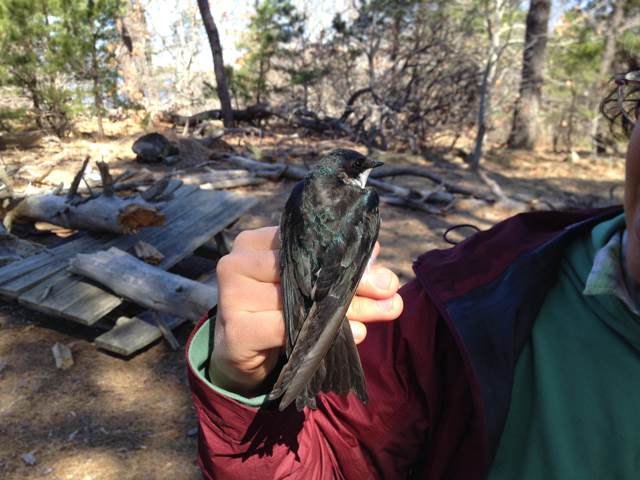Our bird banding station has opened for spring business. As of mid-April, we were seeing what you’d pretty much expect. But, as always, getting such a close look at even the most common birds is a pleasure.
Tree swallows, hopped up on breeding hormones, have inadvertently flown into the mist nets a few times. This one below is a second year female whose upper parts show only tinges of blue-green color right now.
Banding station manager James Junda says next year this bird’s feathers will be all green compared to the dark blue coloring of this male.
Here’s another second year bird, a male Red-winged Blackbird. While these young fellas aren’t ready to hold down a territory with multiple females (or harems), James says their brown feathering sometimes allows them to blend in with brownish females and breed with them on the sly!
The final photo shows why banding provides such unique opportunities to appreciate birds at close range. This may be the most colorful Mourning Dove you’ll ever see.
Mourning Doves don’t have flashy breeding plumages, but in the hand, you can easily see the iridescent pastels this male has.
If you haven’t been to a banding demonstration make sure you get to at least one session this spring. We can’t wait to see the species that will surprise us!





